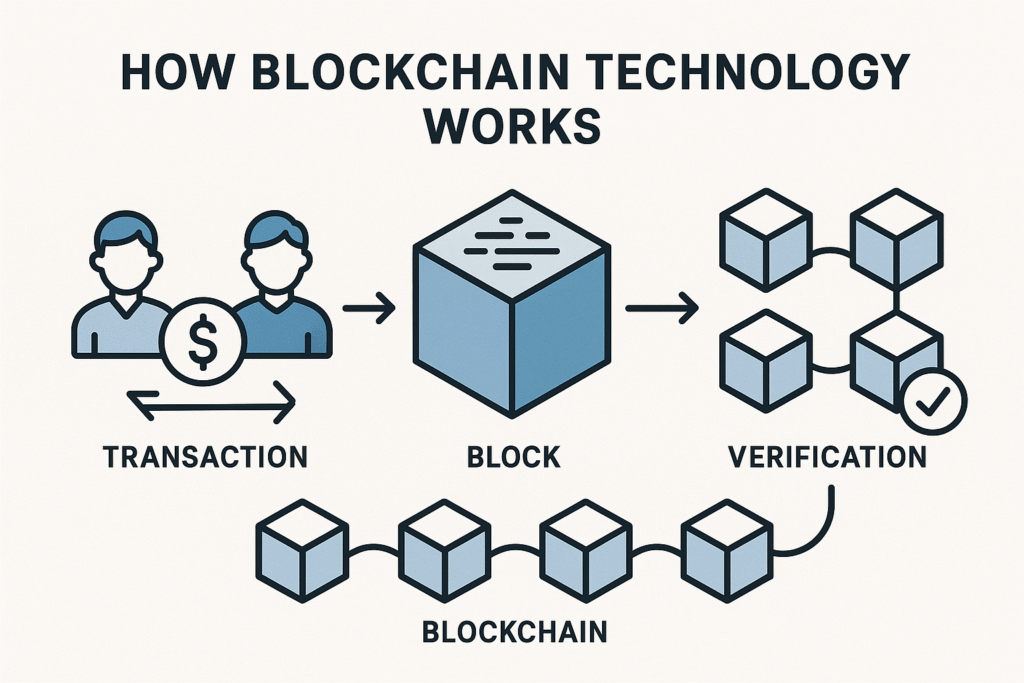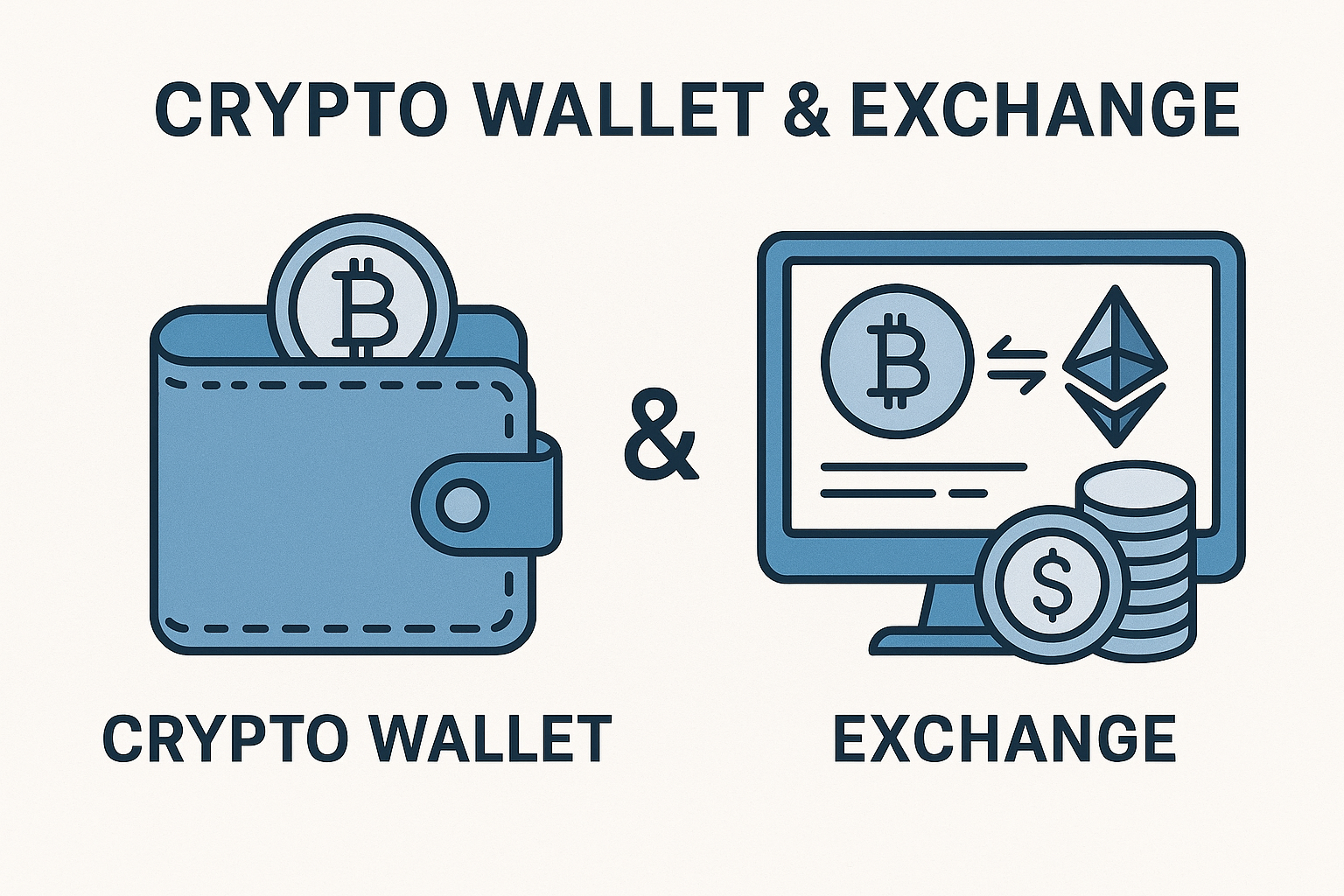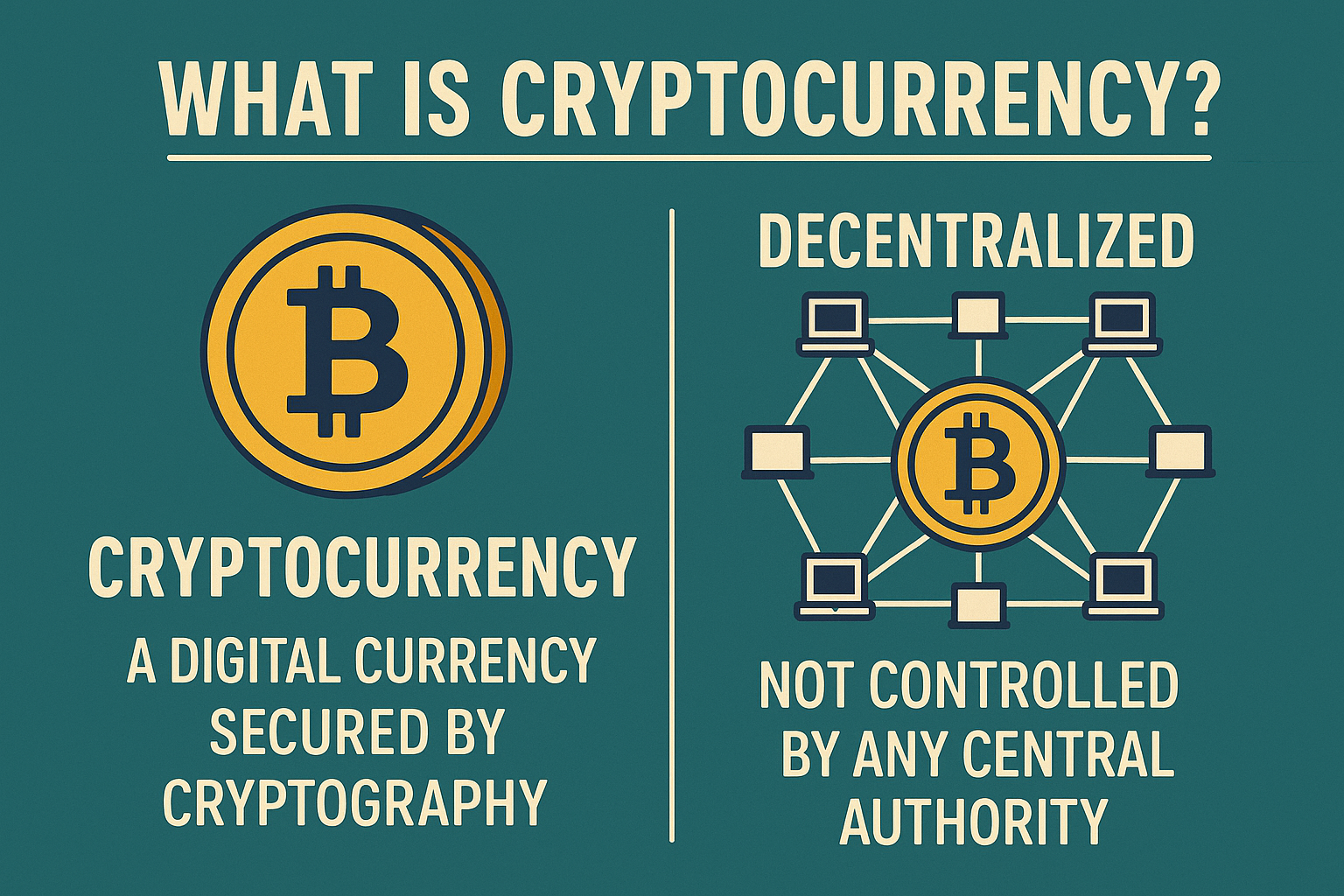Introduction
Imagine a world where your money isn’t controlled by banks or governments, where transactions are instant, secure, and accessible to anyone with an internet connection. This isn’t a futuristic fantasy; it’s the reality of cryptocurrency. For many in the USA, the term ‘cryptocurrency’ might conjure images of volatile investments and complex technology. But at its core, cryptocurrency is simply digital money, designed to empower individuals and revolutionize how we think about finance. Whether you’re a seasoned investor or just curious about this digital frontier, understanding the basics of crypto is an essential first step in navigating the modern financial landscape. This beginner’s guide will demystify cryptocurrency, explaining what it is, how it works, and why it’s becoming an increasingly important part of our world.
What is Cryptocurrency?
At its heart, cryptocurrency is a form of digital or virtual currency that uses cryptography for security. Unlike traditional money (like the US dollar), which is issued and controlled by a central authority such as a government or central bank, cryptocurrencies are decentralized. This means no single entity has control over them. Think of it as a peer-to-peer electronic cash system.
The most well-known cryptocurrency, Bitcoin, was created in 2009 by an anonymous entity known as Satoshi Nakamoto. Bitcoin emerged from a desire for a financial system that was transparent, secure, and free from the influence of intermediaries. Since then, thousands of other cryptocurrencies, often called “altcoins,” have emerged, each with its own unique purpose and technology.
These digital assets exist purely in electronic form. You can’t hold a Bitcoin in your hand like a dollar bill. Instead, they are stored in digital wallets and transactions are recorded on a public ledger called a blockchain. This innovative technology is what makes cryptocurrencies so revolutionary.
How Does Cryptocurrency Work?
The magic behind cryptocurrency lies in a technology called blockchain. Imagine a digital ledger, a massive, continuously growing list of records, or ‘blocks,’ that are linked together using cryptography. Each block contains a timestamp and transaction data, and once a block is added to the chain, it cannot be altered. This creates an immutable and transparent record of all transactions.

Here’s a simplified breakdown of how it works:
•Decentralization: Instead of a central bank managing transactions, a cryptocurrency network is distributed across thousands of computers worldwide. This decentralized nature makes it incredibly resistant to censorship and fraud.
•Cryptography: Every transaction is secured using advanced cryptographic techniques. When you send cryptocurrency, it’s digitally signed with your unique private key, ensuring that only you can authorize the transfer and that the transaction is legitimate.
•Mining/Validation: For new transactions to be added to the blockchain, they must be verified. This process is often called ‘mining’ (for cryptocurrencies like Bitcoin that use ‘Proof of Work’) or ‘validation’ (for those using ‘Proof of Stake’). Miners or validators use powerful computers to solve complex mathematical puzzles, and once solved, the new block of transactions is added to the blockchain. This process not only secures the network but also creates new units of the cryptocurrency as a reward for the miners/validators.
•Public Ledger: All confirmed transactions are publicly recorded on the blockchain. While your personal identity remains anonymous, the transaction details (wallet addresses, amounts) are transparent and viewable by anyone on the network. This transparency builds trust and prevents double-spending.
This intricate system ensures that every transaction is secure, verified, and recorded without the need for a middleman, making it a truly peer-to-peer financial system.
Benefits and Use Cases of Cryptocurrency
Cryptocurrency offers a compelling alternative to traditional financial systems, bringing with it a host of benefits and diverse use cases that are reshaping industries and empowering individuals. Here are some of the key advantages:
•Financial Inclusion: For the millions of unbanked or underbanked individuals globally, cryptocurrency provides access to financial services without the need for traditional banks. All that’s required is an internet connection and a smartphone.
•Lower Transaction Fees: Traditional banking and payment systems often come with high transaction fees, especially for international transfers. Cryptocurrency transactions, particularly on efficient networks, can be significantly cheaper, making them attractive for remittances and cross-border commerce.
•Faster Transactions: International bank transfers can take days to clear. Cryptocurrency transactions, once confirmed on the blockchain, can be nearly instantaneous, regardless of geographical distance.
•Enhanced Security: The cryptographic nature of blockchain technology makes cryptocurrency transactions incredibly secure and resistant to fraud. Once a transaction is recorded, it’s virtually impossible to alter or reverse.
•Transparency: While user identities are pseudonymous, every transaction is recorded on a public ledger, offering a level of transparency that traditional financial systems often lack. This can help reduce corruption and increase accountability.
•Decentralization: The absence of a central authority means no single entity can control or manipulate the network. This protects users from government censorship, economic instability, or bank failures.
•Investment Opportunities: Beyond its utility as a currency, many cryptocurrencies are viewed as investment assets. Their value can fluctuate based on supply and demand, technological advancements, and market sentiment, offering potential for significant returns (though also significant risks).
•New Financial Products (DeFi): Decentralized Finance (DeFi) is a rapidly growing ecosystem built on blockchain technology, offering services like lending, borrowing, and trading without intermediaries. This opens up new avenues for financial innovation and access.
•Digital Ownership (NFTs): Non-Fungible Tokens (NFTs) are unique digital assets stored on a blockchain, representing ownership of digital art, music, collectibles, and more. They are revolutionizing the concept of digital property rights.
From facilitating quick, low-cost international payments to enabling entirely new forms of digital ownership and financial services, cryptocurrency is proving to be far more than just a speculative asset. It’s a foundational technology with the potential to transform various aspects of our digital and financial lives.
Common Risks and Drawbacks of Cryptocurrency
While the potential of cryptocurrency is vast, it’s crucial for beginners to understand the inherent risks and drawbacks before diving in. Like any emerging technology and investment, crypto comes with its own set of challenges:
•Volatility: Cryptocurrency markets are notoriously volatile. Prices can swing dramatically in short periods, leading to significant gains or losses. This high volatility makes it a risky investment, especially for those new to the space.
•Regulatory Uncertainty: The regulatory landscape for cryptocurrency is still evolving globally, including in the USA. Different countries and even different states within the US have varying approaches to crypto, which can create legal ambiguities and impact its adoption and stability. Changes in regulations can significantly affect market prices.
•Security Risks (Hacks and Scams): While blockchain technology itself is secure, the platforms and methods used to store and trade cryptocurrency can be vulnerable. Exchanges and individual wallets can be targeted by hackers, leading to theft of funds. Additionally, the crypto space is rife with scams, phishing attempts, and fraudulent projects designed to trick unsuspecting investors.
•Irreversible Transactions: Unlike traditional banking where erroneous transactions can often be reversed, cryptocurrency transactions are generally irreversible once confirmed on the blockchain. If you send crypto to the wrong address, or fall victim to a scam, recovering your funds is often impossible.
•Complexity and Learning Curve: Understanding the technical aspects of blockchain, different types of cryptocurrencies, wallet management, and trading platforms can be daunting for beginners. The steep learning curve can lead to mistakes and potential losses.
•Environmental Concerns: The ‘Proof of Work’ consensus mechanism used by some major cryptocurrencies, like Bitcoin, requires a significant amount of computational power and, consequently, energy. This has raised environmental concerns due to the carbon footprint associated with mining operations.
•Scalability Issues: Some older blockchain networks can struggle with scalability, meaning they can only process a limited number of transactions per second. This can lead to network congestion and higher transaction fees during peak times.
•Custody and Responsibility: With traditional banks, your money is insured up to a certain amount. With cryptocurrency, you are often solely responsible for the security of your digital assets. Losing your private keys or having your wallet compromised means losing your funds with little to no recourse.
Navigating the cryptocurrency world requires careful research, a clear understanding of these risks, and a commitment to continuous learning. It’s often advised to only invest what you can afford to lose and to approach the market with caution and a long-term perspective.

Tools, Examples, and Comparisons in the Crypto World
To truly grasp the landscape of cryptocurrency, it helps to understand the key players, common tools, and how they stack up against traditional financial instruments. For those in the USA looking to engage with digital assets, familiarity with these elements is crucial.
Key Cryptocurrencies: Beyond Bitcoin
While Bitcoin (BTC) remains the pioneer and largest cryptocurrency by market capitalization, the ecosystem has diversified significantly. Here are a few prominent examples:
•Bitcoin (BTC): Often referred to as ‘digital gold,’ Bitcoin was created as a decentralized digital currency. Its primary use case is as a store of value and a medium of exchange. It operates on a Proof-of-Work (PoW) blockchain, which is secured by a vast network of miners.
•Ethereum (ETH): More than just a currency, Ethereum is a decentralized platform that enables the creation of smart contracts and decentralized applications (dApps). Its native cryptocurrency, Ether, powers transactions on the network. Ethereum is transitioning from PoW to Proof-of-Stake (PoS) with its ‘Merge’ upgrade, aiming for greater energy efficiency and scalability.
•Stablecoins (e.g., USDT, USDC): These cryptocurrencies are designed to minimize price volatility by pegging their value to a stable asset, such as the U.S. dollar. They serve as a bridge between the volatile crypto market and traditional fiat currencies, making it easier for traders to enter and exit positions without converting back to traditional money.
•Altcoins: This broad category includes all cryptocurrencies other than Bitcoin. Examples include Cardano (ADA), Solana (SOL), and XRP (Ripple). Each altcoin often aims to solve a specific problem or offer unique functionalities, from faster transaction speeds to enhanced privacy or specialized applications.
Essential Tools for Crypto Engagement
Engaging with cryptocurrency requires specific tools that differ from traditional banking. Here are the most common ones:
•Crypto Exchanges: These are online platforms where you can buy, sell, and trade cryptocurrencies. Popular centralized exchanges in the USA include Coinbase, Binance.US, and Kraken. They act as intermediaries, similar to stockbrokers. Decentralized exchanges (DEXs) like Uniswap allow peer-to-peer trading directly from your wallet, offering more control but often a steeper learning curve.
•Crypto Wallets: A digital wallet is where you store your cryptocurrencies. It doesn’t actually hold the crypto itself, but rather the private keys that give you access to your assets on the blockchain. Wallets come in various forms:
•Hot Wallets: Connected to the internet (e.g., exchange wallets, mobile apps, desktop software). Convenient but more susceptible to online threats.
•Cold Wallets: Offline storage (e.g., hardware wallets like Ledger or Trezor, paper wallets). Offer higher security against hacks but are less convenient for frequent transactions.
•Blockchain Explorers: These are online tools that allow anyone to view transactions, blocks, and wallet addresses on a blockchain. They provide transparency and allow users to verify the status of their transactions.

Cryptocurrency vs. Traditional Finance: A Comparison
Understanding the differences between crypto and traditional finance (TradFi) is key to appreciating the innovation and disruption cryptocurrency brings.
| Feature | Traditional Finance (TradFi) | Cryptocurrency (Crypto) |
| Control | Centralized (banks, governments, financial institutions) | Decentralized (peer-to-peer network, no single authority) |
| Transactions | Processed by intermediaries (banks), can take days | Processed on blockchain, often faster and direct |
| Fees | Often higher, especially for international transfers | Generally lower, varies by network congestion |
| Accessibility | Requires bank account, credit checks, geographical limits | Requires internet access, accessible globally |
| Transparency | Limited, often opaque | Public ledger (blockchain) for all transactions |
| Security | Regulated, insured (up to a limit) | Cryptographically secured, user responsible for custody |
| Privacy | Personal identity linked to transactions | Pseudonymous (wallet addresses, not personal identity) |
| Innovation | Slower, regulated | Rapid, permissionless (DeFi, NFTs) |
This comparison highlights the fundamental shift cryptocurrency represents: a move towards a more open, transparent, and user-controlled financial system. While TradFi offers stability and established regulations, crypto promises efficiency, accessibility, and innovation, albeit with higher risks.
Final Thoughts and Summary
Cryptocurrency, at its core, represents a paradigm shift in how we perceive and interact with money. It’s a powerful innovation that challenges traditional financial systems by offering decentralization, transparency, and enhanced security through blockchain technology. For beginners in the USA, understanding this new frontier is not just about potential investment gains, but about grasping a fundamental change in the digital economy.
We’ve explored how cryptocurrency operates on a distributed ledger, bypassing central authorities and enabling peer-to-peer transactions. We’ve seen its compelling benefits, from financial inclusion and lower transaction fees to the exciting possibilities of Decentralized Finance (DeFi) and Non-Fungible Tokens (NFTs). However, we’ve also critically examined the significant risks, including market volatility, regulatory uncertainties, and security vulnerabilities. The comparison with traditional finance highlights crypto’s disruptive potential, offering a glimpse into a future where financial interactions are more direct and user-controlled.
As the world continues to embrace digital transformation, cryptocurrency is poised to play an increasingly significant role. While the journey into this space requires careful research, a healthy dose of skepticism, and a commitment to continuous learning, the rewards of understanding and potentially participating in this evolving ecosystem can be substantial. Approach with caution, educate yourself thoroughly, and remember that the future of finance is being built, block by block, right before our eyes.
Frequently Asked Questions (FAQ)
Q1: Is cryptocurrency legal in the USA?
Yes, cryptocurrency is legal in the USA. However, the regulatory landscape is still evolving, and different states may have varying regulations. The IRS treats cryptocurrency as property for tax purposes, meaning you must report any gains or losses from crypto transactions.
Q2: How do I buy cryptocurrency?
To buy cryptocurrency, you typically need to use a cryptocurrency exchange (like Bybit or Binance). You’ll create an account, verify your identity, link a payment method (bank account, debit card), and then you can purchase cryptocurrencies like Bitcoin or Ethereum. After purchasing, you can store your crypto on the exchange or transfer it to a personal crypto wallet.
Q3: Is cryptocurrency a good investment?
Cryptocurrency can be a highly volatile and speculative investment. While there’s potential for significant returns, there’s also a high risk of losing money. It’s crucial to do your own research, understand the risks involved, and only invest what you can afford to lose. Many financial advisors suggest a diversified portfolio and a long-term perspective for crypto investments.
Q4: What is blockchain technology?
Blockchain is the underlying technology that powers most cryptocurrencies. It’s a decentralized, distributed public ledger that records all transactions across a network of computers. Each ‘block’ contains a list of transactions, and once a block is completed, it’s added to the ‘chain’ in a chronological and immutable way. This makes the system secure, transparent, and resistant to tampering.
